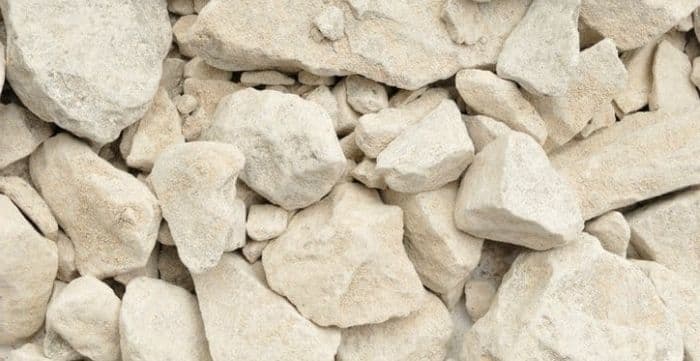
Anytime you see a limestone, you are seeing the final product of an age-long process. In clear terms, you should know that it has taken well over 2 billion years to arrive at what you see.
From times as old as the reign of the Egyptian empire, this sedimentary rock has played a huge role most especially in construction. This is considering how it was a major part of what formed the pyramids that Egypt is well known for.
The truth is that there is so much to the history of this sedimentary rock. If you are interested in knowing more about this, you can visit here.
There is so much to say about this limestone but this article will shed some light on some of the basic things to know. You are advised to keep reading considering the many uses of limestone and its final product – lime.
What is Lime?
This is the final product of a rock – limestone; which is in the category of sedimentary rocks that has a calcite concentration of no less than 50%. But other than calcite, it is also made up of a large amount of aragonite. Both primary chemical properties are calcium carbonates in crystal forms.
Quicklime, high calcium lime, calcium oxide, and dolomitic lime are some of the other terms used to refer to it. However, the names are suggestive of the chemical properties for the most part.
What is known as Dolomitic lime has a rich amount of MgO (magnesium oxide) for instance. Magnesium carbonate and calcium carbonate are the two carbonate forms that this lime consists of. On the other hand, what is known as high calcium lime consists of almost 100% calcium carbonate that is pure.
How it Is Formed from Limestone
We have established that it is derived from a sedimentary rock known as limestone. This means that this rock must have undergone several processes before it fits into the description of what is known as lime. These processes include:
-
Analysis
Limestone has to meet certain physical and chemical standards before it can be used. This is why chemical and geological analysis has to be carried out to ascertain this.
The limestone’s physical and chemical composition has to be determined before it can be considered and different techniques are used to do this. If you are interested in knowing about these techniques, you can check here.
If the limestone in question ticks all the boxes, it would go through the next stage discussed below. If it does not, there are other uses for it. It can be used as fillers and aggregate in some markets for instance.
-
Extraction
Limestone has a lot of uses across various industries but the journey starts from extraction after analysis has been carried out. This is usually done using a method known as open casting.
-
Sizing
The different lime products are mostly determined by their size. Well, the sizing process that takes place after extraction is largely responsible for this. This is the stage where this sedimentary rock ends up being crushed into consistent pieces.
-
Calcining
The sizing stage is crucial but not the end of production. This is because the consistently crushed limestone still needs to end up in something known as a kiln. This is the machine that will cook up the sedimentary rock into its eventual outcome.
You should know that these crushed sedimentary rocks can be subjected to as much as slightly over 1000 degrees Celsius. A lot of CO2 is released into the atmosphere as a result and this is why environmentalists are very concerned about its production.
Some Lime Products
We briefly explained how important the sizing stage is above. This is because the different products are usually down to the sizing process. Some of the products that become of this process and further processes include the following:
-
Quicklime Slurry
The formation of this product involves calcium hydroxide being suspended in water. This sort is a good industry solution for people that cannot deal with dust or simply need lime in a liquid form.
-
Hydrated Lime
This product is used in the creation of asphalt and for other applications. However, it takes a lot to produce it as quicklime has to go through additional processes. The result is a white powder that has a very fine form.
-
Lime Fines
Generally speaking, this product is no more than a quarter of an inch in size and plays a major role in the construction industry. This is especially because of its positive impact in helping soil stabilize, dry, and modify quickly.
-
Pebble Lime
The size of this product is a lot bigger than the option discussed above. They could be as large as 2 inches in size but nothing smaller than a quarter of an inch. The steel industry and several other industries make the most of this product.
Conclusion
There are a few other products apart from the ones discussed above. However, the more important thing is having answers to the question “what is lime?” and how it is formed. Every other thing you need to know about this sedimentary rock-derived product comes afterward.
This is why this article has treated these questions in particular. People that need lime products are advised to work with companies committed to properly analyzing limestone before extraction and other stages are carried out. This is because making a good lime product out of bad limestone is not possible.
Read more blog: What is granite stone pan made of?